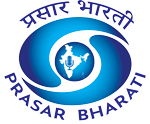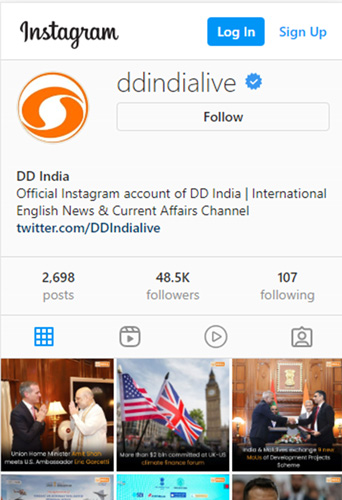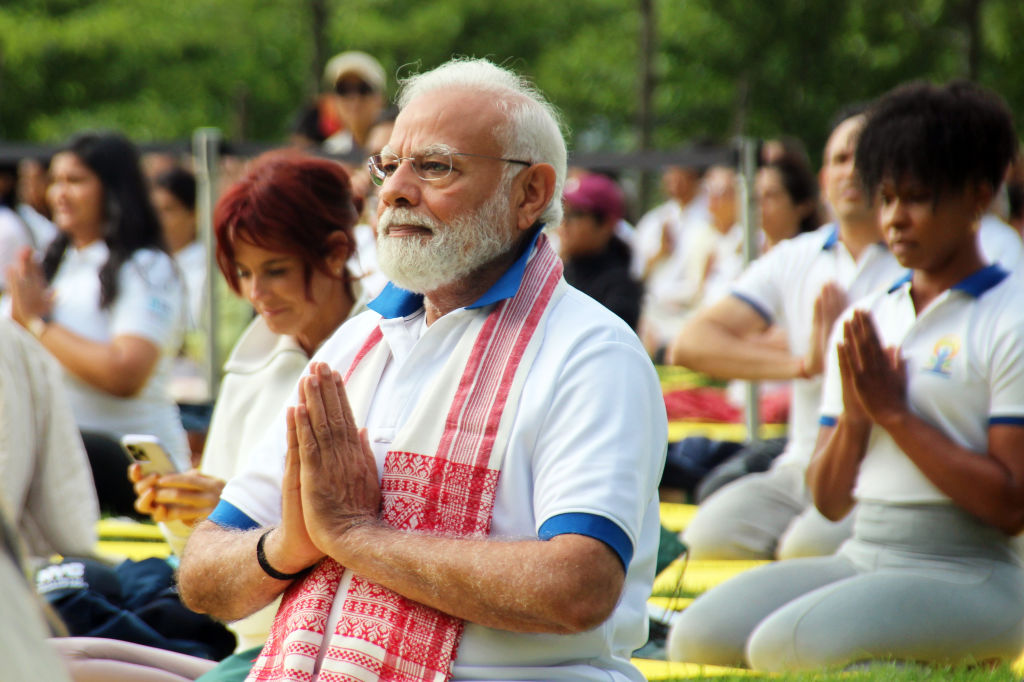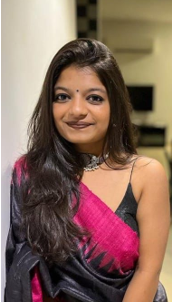This cultural momentum was on vivid display in June 2023, when Prime Minister Modi led a yoga session at the United Nations headquarters in New York. Performing pranayama on the UN lawn alongside diplomats and UN officials, Modi helped set a Guinness World Record with participants from 135 countries doing yoga together.
“Yoga is unifying and truly universal. It is for all ethnicities, faiths and cultures,” Modi told the gathering, emphasizing its role in bridging global divides. The image of India’s leader championing an ancient Indian practice at the world’s preeminent multilateral stage was a powerful symbol of cultural diplomacy coming full circle, heritage as an instrument of international unity.
India’s heritage is a living, breathing force sculpted in sandstone, whispered through temple bells, and etched across millennia of civilizational memory. Walk through the corridors of Hampi, where the remnants of the Vijayanagara Empire stand like verses of forgotten poetry carved in granite. Or witness the geometry of devotion in the Sun Temple of Konark, where the chariot of the sun god rides across stone wheels frozen in motion.
In the north, the Taj Mahal remains India’s most photographed tear on the cheek of time, while in the northeast, the living roots of Meghalaya speak of a harmony between people and nature few nations can match. Each monument is a story, each sculpture a symbol, from the cave paintings of Bhimbetka, some of the oldest human expressions on Earth, to the marble latticework of Rajasthan’s havelis, which breathe opulence and art.
Tourism in India has become more than a commercial enterprise; it’s now a strategy to protect, project, and popularize heritage with purpose. Government programs like Swadesh Darshan and PRASHAD are not just about building circuits and infrastructure, they’re about narrative crafting. They’re designed to take tourists off the beaten path, into the heartlands of civilizational wealth, like the Ramayana Circuit, which reimagines ancient epics as immersive journeys, or the Buddhist Circuit, linking sites from Lumbini to Sarnath. Cities like Varanasi have undergone sensitive restoration to balance spiritual sanctity with modern tourism needs, while Hampi and Mahabalipuram now host international cultural festivals that draw visitors beyond the curious into the culturally invested.
Indian festivals are evolving, focusing less on their locations and more on their reinterpretations. Holi, for example, has become a global spring celebration, taking place in venues like Berlin warehouses and vibrant music festivals in Brazil. Navratri has gained traction in Western cities such as Leicester and Edison, attracting thousands of dancers, many of whom are not Indian. Classical dance is also breaking out of its traditional confines; Bharatanatyam, Kuchipudi, and Odissi troupes now perform as main attractions at European festivals. This shift illustrates a process of cultural normalization rather than simple cultural export.
Importantly, there’s a visible push toward responsible tourism, local guides are being trained in storytelling, heritage hotels are being incentivized to preserve architecture, and digital tools like QR-coded plaques at UNESCO sites are helping tourists access layered historical context. Whether it’s walking the ancient ghats or navigating the desert forts of Jaisalmer, the experience is increasingly curated not just for visual awe, but for emotional imprint.
Prime Minister Narendra Modi, more than any of his predecessors, has deliberately made India’s cultural heritage a calling card in diplomacy. He often says that in the 21st century, India’s role as a “Vishwa Guru” (world teacher) will come not from its economic might alone, but from its cultural ethos and knowledge traditions. Modi’s own words and actions on the world stage underscore this conviction. In a 2015 address at UNESCO in Paris, he affirmed, “Culture must connect, not divide, our world. It should be a bridge to greater respect and understanding between people.” Standing in that temple of culture and education, he thanked UNESCO for helping preserve India’s heritage and championed India’s civilizational contributions. “We are grateful for UNESCO’s support for the preservation of our cultural heritage,” Modi noted, linking it to a duty India owes the world. He frequently invokes the Sanskrit maxim “Vasudhaiva Kutumbakam” (the world is one family) to frame India’s global cultural outlook.
The Indian state has refined the stagecraft of soft power, from the banks of the Seine to the streets of Sydney, Indian festivals are becoming fixtures of cultural calendars far from home. Events like Namaste France, Festival of India in Russia, and India by the Nile in Egypt are less about nostalgia and more about narrative control. Designed by the Indian Council for Cultural Relations (ICCR) and coordinated with local embassies, these festivals serve a diplomatic function in silk and sound, showcasing India’s classical arts, crafts, and contemporary culture in curated capsules. Whether through a Kathakali performance in Moscow or a sari-weaving demo in Cairo, the idea is to replace outdated stereotypes with direct cultural engagement, intimate, high-quality, and often deliberately unexpected.
Modi has also walked the talk by infusing cultural elements into high diplomacy. His mass rallies with the Indian diaspora in cities like New York, London, and Sydney, the likes of the “Howdy Modi” event in Texas (2019), are peppered with cultural performances, from phanga troupes to spiritual music, presenting a vibrant image of Indian culture to foreign dignitaries present. On state visits, he often gifts foreign leaders replicas of Indian relics or texts (such as handing over an ancient Tamil manuscript to the leader of Singapore, or the Bhagavad Gita to the Japanese emperor), subtly spreading awareness of India’s civilizational depth. Under Modi’s watch, International Yoga Day became a showcase annual event in virtually every embassy. His government also pushed for global recognition of practices like Ayurveda and traditional medicine, and in 2023 spearheaded a UN resolution declaring 2023 the International Year of Millets, spotlighting a traditional Indian grain on the world stage (a point Jaishankar highlighted as soft power in action).
While yoga studios dot every cosmopolitan skyline, another ancient Indian practice is making its way into global consciousness, but with institutional backing this time. In 2022, the World Health Organization, in partnership with India, launched its first Global Centre for Traditional Medicine in Gujarat. The move signaled not just global recognition of Ayurveda, but a willingness to subject it to serious scientific frameworks. Unlike yoga’s grassroots spread, Ayurveda’s global journey is now part of a formal wellness economy, one that includes Ayurvedic clinics in Europe, cosmeceuticals in Japan, and integrative medicine departments in American hospitals. India is no longer pitching Ayurveda as heritage alone but as a viable contender in the global health marketplace.
Crucially, Modi’s cultural diplomacy has been backed by considerable state investment. Cultural exchange budgets have risen, new museums and heritage conservation projects have been launched domestically (such as a major restoration of Varanasi, the ancient holy city, to make it more tourist-friendly), and there is a strong cultural component in India’s foreign aid – for example, helping renovate temples in neighbouring countries or language scholarships for foreigners. In international forums like the G20 (which India chaired in 2023), India has advocated for incorporating culture into the global development agenda, arguing that “culture is as much a driver of sustainable development as economics.”
UNESCO Director-General Audrey Azoulay, during a recent visit to India, acknowledged India’s “strong commitment” to UNESCO’s mandate and noted that India hosting the upcoming World Heritage Committee session was a testament to its leadership in cultural preservation. Modi often articulates a philosophical underpinning to these efforts: that India’s heritage is not just about the past, but a resource for global harmony. “This resolve of India regarding heritage is linked with the feeling of serving the entire humanity,” he said at a heritage event, “Indian culture talks about us, not just me”.
The cumulative impact of these initiatives and organic trends is visible in India’s bolstered global image. International surveys by consulting firms note that India’s cultural appeal (its food, music, Bollywood, etc.) consistently ranks high among the foreign public, even if opinions on its politics vary. Former U.S. Secretary of State Madeleine Albright once quipped, “India’s soft power indeed makes it the ‘curry’ nation, acquiring a taste is only a matter of time.”
Rann Utsav and Durga Puja have both received UNESCO recognition, highlighting two very different Indian festivals: one steeped in tradition and the other in innovation. In 2021, Durga Puja in Kolkata was recognized not only for its grandeur but also for its rich ecosystem of craftsmanship, street art, music, and community involvement. On the other hand, Rann Utsav in Kutch, Gujarat, presents a contrasting model. It is a festival that emerged not from ancient texts but from contemporary tourism policies. Featuring desert installations, local artisan markets, and curated eco-lodging, Rann Utsav exemplifies how cultural spectacles can energize rural economies.
Together, these festivals represent a significant shift in perspective: Indian festivals are no longer just celebrations but are now seen as strategic cultural assets on a global stage.
India’s cultural diplomacy increasingly does travel with speeches, but also with scaffolding and conservation crews. Over the past few years, the Indian government has quietly expanded its footprint in heritage restoration across Asia, as a stakeholder. In Cambodia, Indian teams have taken lead roles in restoring segments of Angkor Wat, one of the world’s most revered temple complexes, where Hindu and Buddhist iconography meet in monumental stonework. Similar archaeological collaborations are underway in Laos, Myanmar, and Vietnam, where remnants of ancient Indic influence are excavated and stabilized. Perhaps the most symbolic of these is the revival of Nalanda University, not as a museum piece, but as a functioning modern campus, a project backed by multiple Asian nations, rooted in the idea that intellectual heritage, too, can be a form of infrastructure.
These restoration projects are just one part of a broader reawakening, it seeks to reconnect with cultural sinews. The subtext of India’s relationship with Southeast Asia is increasingly cultural, and the script is older than modern diplomacy. The spread of epics like the Ramayana and architectural lineages shared between Indian and Southeast Asian temples have long been studied by historians, now, they’re being utilized by strategists.
Through the Act East Policy, New Delhi is embedding culture into policy, sending Sanskrit scholars to Thai universities, co-hosting Ramayana re-enactments in Cambodia, and investing in language chairs and research fellowships across Southeast Asia. These aren’t sentimental gestures; they’re signals. India isn’t just tracing its cultural DNA in the region, it’s reactivating it as geopolitical soft tissue in an increasingly contested Asia.
Today, that lighthearted prediction seems truer than ever, from Capitol Hill to a village in Africa, one is likely to find people practising yoga, watching an Indian web series, or enjoying a cup of chai. Global brands and institutions are also leaning in. The United Nations has embraced multiple Indian-led cultural resolutions (Yoga Day, Year of Millets), and foreign universities are expanding Hindi and Indology departments. In 2022, Oxford University Press noted that “Namaste”, the Indian greeting, had entered common global usage, especially after it got popularized as a no-contact greeting during the pandemic.
Endorsements of Indian culture now come in the form of collaborations and accolades. When the Academy Awards saw Indian talent on stage, or when luxury Maison Dior declares that its lavish Mumbai show “spotlights the extraordinary craftsmanship of India’s artisans,” it validates India’s cultural capital on the world stage. At Times Square’s Diwali festival mentioned earlier, New York’s Mayor joined the revellers, stating, “What better place to celebrate the festival of lights than in the Crossroads of the World?” and spoke of “pushing away darkness and welcoming light across our city”. Such moments, where foreign leaders participate in Indian traditions, symbolize acceptance and respect for Indian culture in the global mainstream.
As India marches forward, challenges remain in fully converting cultural clout to geopolitical influence. Soft power can be fragile, it requires continual nurturing of a positive narrative. Events that conflict with the image of a pluralistic, open India can dampen the soft power sheen. Yet, there is a growing recognition that India’s “culture of unity in diversity” is itself a compelling message at a time of global divisions. Diplomacy veterans suggest India could further institutionalize cultural diplomacy by partnering more with its 30-million-strong diaspora, many of whom act as informal cultural ambassadors. There are also calls for India to invest in global media or entertainment platforms to amplify its voice (for instance, an “Indian Netflix” for the world). Still, the progress of the last decade is evident and remarkable.
In a world hungry for authentic connections, India’s heritage offers a feast, and New Delhi has learned to serve it with style. The past ten years, especially under the Modi administration, have shown how ancient soft power assets can be repurposed for modern statecraft. India’s classical dances and digital tech coexist in its toolkit of influence. As Soft Power Index rankings climb and Holi powders fly across foreign skies, India might well be entering what one analyst termed “a golden age of cultural diplomacy.” In Prime Minister Modi’s words, “The heritage of India is the heritage of the world”, and by championing culture as a unifying force, India is steadily turning that principle into palpable global goodwill. The stage is set, the world’s a willing audience, and India’s cultural soft power show is only just beginning.
Sources:
1. Ministry of External Affairs (MEA), Government of India – https://www.mea.gov.in
2. Brand Finance – Global Soft Power Index 2023 – https://brandfinance.com
3. Indian Council for Cultural Relations (ICCR) – https://www.iccr.gov.in
4. UNESCO – India Cultural Heritage & Initiatives – https://en.unesco.org
5. Screen Daily – Coverage of ‘Dangal’ in China – https://www.screendaily.com
6. The Guardian – UK’s Chicken Tikka Masala Reference – https://www.theguardian.com
7. Vogue India – Deepika Padukone & Louis Vuitton Campaigns – https://www.vogue.in
8. NDTV – Coverage of Sabyasachi’s H&M Collaboration – https://www.ndtv.com
9. Business of Fashion – Dior Mumbai Runway Event – https://www.businessoffashion.com
10. Prime Minister’s Office (PMO) – Modi’s UNESCO Speech – https://www.pmindia.gov.in
11. Time Magazine – Global Holi Celebrations – https://time.com
12. Governor of New York’s Office – Diwali Proclamation & Celebrations – https://www.governor.ny.gov
13. Times of India – Diwali @ Times Square Coverage – https://timesofindia.indiatimes.com
14. Oxford University Press – Namaste Usage Analysis – https://global.oup.com
1. Ministry of External Affairs (MEA), Government of India – https://www.mea.gov.in
2. Brand Finance – Global Soft Power Index 2023 – https://brandfinance.com
3. Indian Council for Cultural Relations (ICCR) – https://www.iccr.gov.in
4. UNESCO – India Cultural Heritage & Initiatives – https://en.unesco.org
5. Screen Daily – Coverage of ‘Dangal’ in China – https://www.screendaily.com
6. The Guardian – UK’s Chicken Tikka Masala Reference – https://www.theguardian.com
7. Vogue India – Deepika Padukone & Louis Vuitton Campaigns – https://www.vogue.in
8. NDTV – Coverage of Sabyasachi’s H&M Collaboration – https://www.ndtv.com
9. Business of Fashion – Dior Mumbai Runway Event – https://www.businessoffashion.com
10. Prime Minister’s Office (PMO) – Modi’s UNESCO Speech – https://www.pmindia.gov.in
11. Time Magazine – Global Holi Celebrations – https://time.com
12. Governor of New York’s Office – Diwali Proclamation & Celebrations – https://www.governor.ny.gov
13. Times of India – Diwali @ Times Square Coverage – https://timesofindia.indiatimes.com
14. Oxford University Press – Namaste Usage Analysis – https://global.oup.com
Bio: Bhakti Parikh is a dynamic professional with expertise in journalism, public relations, and media management. She has contributed significantly to various roles, including Founder & Editor-in-Chief of The Sparrow, where she leads editorial content and strategy for a digital news platform.











